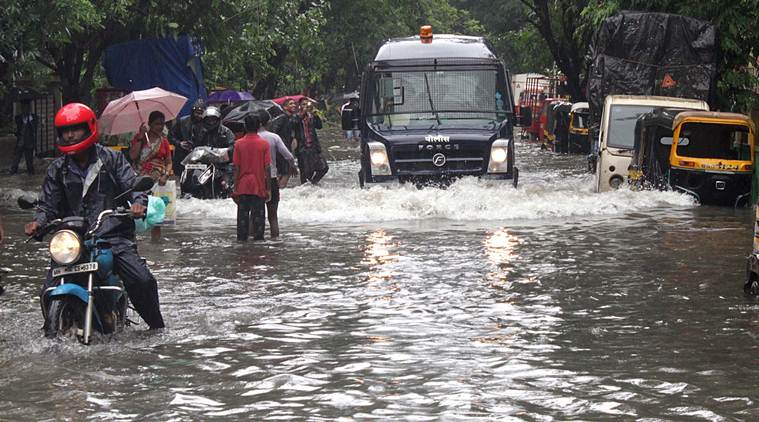
The Indian Express
With monsoon arriving soon, flood alerts to begin in Mumbai
Every year, Mumbai receives very heavy rain within a short time, which usually brings the city to a halt. Urban flooding is common in the city from June to September, resulting in the crippling of traffic, railways and airlines.
by Anjali MararThis monsoon, Mumbai city will get its own Flood Warning System, which will be able to relay alerts of possible flood-prone areas anywhere between six to 48 hours in advance.
Every year, Mumbai receives very heavy rain within a short time, which usually brings the city to a halt. Urban flooding is common in the city from June to September, resulting in the crippling of traffic, railways and airlines.
In a joint initiative between the Ministry of Earth Sciences (MoES) and Municipal Corporation of Greater Mumbai, the warning system is expected to be deployed next month, as monsoon is set to enter the state by June 10.
“The monitoring system is ready for deployment in Mumbai. All information regarding possible flood-prone areas, likely height the flood water could attain, and other details will be shared with the corporation. They can then disseminate alerts to the public,” M Rajeevan, secretary, MoES said on Friday.
Once operational, Mumbai will be the second city in the country to have such a system, after Chennai. However, weather models and tools used for the system in Mumbai are different.
The work for developing such a system had begun over two years ago. During this period, topography maps, details of drainage and pipelines, lakes, rivers and other water bodies within Mumbai were acquired. Besides, a good network of rain gauges was laid throughout the city, which was led by a team of scientists at Indian Institute of Tropical Meteorology (IITM) Pune.
The primary source for the system will be the rainfall, but with Mumbai being a coastal city, the system will also factor in tidal waves and storm tides for its flood assessments.
Based on the amount of rain recorded, time, location, topography and forecast, the system is designed to generate flood warnings for specific geographical areas of the city. All this information will then be routed to authorities, said the MoES secretary.
He emphasises that the system will act as a guide towards decision-making for the local administration, in case of possible flooding after heavy rainfall.
hen asked about the lead time to relay flood information to the civic body, Rajeevan said, “We will use the existing Nowcast warning, which is provided up to six hours in advance. We will also give forecasts two days in advance.”
Nowcast is a weather forecast issued by India Meteorological Department (IMD) for weather events likely to take place within the immediate six hours over a particular area. These are mainly issued for weather events like heavy rainfall, thunderstorm, hailstorm and lightning.
Work on developing similar systems is presently on for Bengaluru, Kolkata and a few more Indian cities, said Rajeevan.